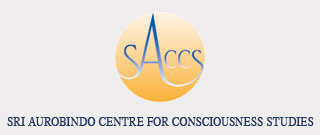WRITINGS BY THE MOTHER
© Sri Aurobindo Ashram Trust
Dynamic meditation
14 March 1956
"The practice of this Yoga demands a constant inward remembrance of the one central liberating knowledge.... In all is the one Self, the one Divine is all; all are in the Divine, all are the Divine and there is nothing else in the universe,--this thought or this faith is the whole background until it becomes the whole substance of the consciousness of the worker. A memory, a self-dynamising meditation of this kind, must and does in its end turn into profound and uninterrupted vision and a vivid and all-embracing consciousness of that which we so powerfully remember or on which we so constantly meditate."
—The Synthesis of Yoga, p. 104
Sweet Mother, what does Sri Aurobindo mean by "a self-dynamising meditation"?
It is a meditation that has the power of transforming your being. It is a meditation which makes you progress, as opposed to static meditation which is immobile and relatively inert, and which changes nothing in your consciousness or in your way of being. A dynamic meditation is a meditation of transformation.
Generally, people don't have a dynamic meditation. When they enter into meditation--or at least what they call meditation--they enter into a kind of immobility where nothing stirs, and they come out of it exactly as they went in, without any change either in their being or in their consciousness. And the more motionless it is, the happier they are. They could meditate in this way for eternities, it would never change anything either in the universe or in themselves. That is why Sri Aurobindo speaks of a dynamic meditation which is exactly the very opposite. It is a transforming meditation. [new p. 89][old p. 89]
How is it done? Is it done in a different way?
I think it is the aspiration that should be different, the attitude should be different. "Different way"--what do you mean by "way"--(laughing) the way of sitting?... Not that? The inner way?
Yes.
But for each one it is different.
I think the most important thing is to know why one meditates; this is what gives the quality of the meditation and makes it of one order or another.
You may meditate to open yourself to the divine Force, you may meditate to reject the ordinary consciousness, you may meditate to enter the depths of your being, you may meditate to learn how to give yourself integrally; you may meditate for all kinds of things. You may meditate to enter into peace and calm and silence--this is what people generally do, but without much success. But you may also meditate to receive the Force of transformation, to discover the points to be transformed, to trace out the line of progress. And then you may also meditate for very practical reasons: when you have a difficulty to clear up, a solution to find, when you want help in some action or other. You may meditate for that too.
I think everyone has his own mode of meditation. But if one wants the meditation to be dynamic, one must have an aspiration for progress and the meditation must be done to help and fulfil this aspiration for progress. Then it becomes dynamic.

